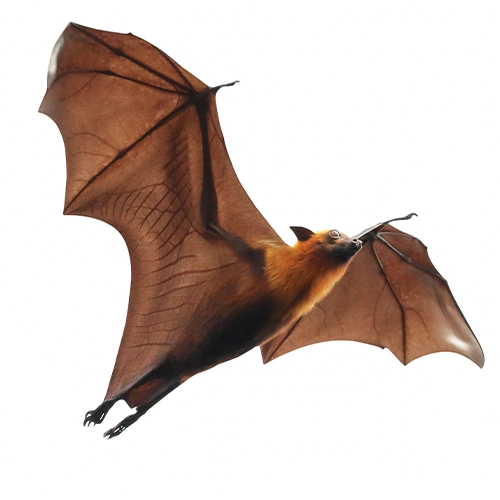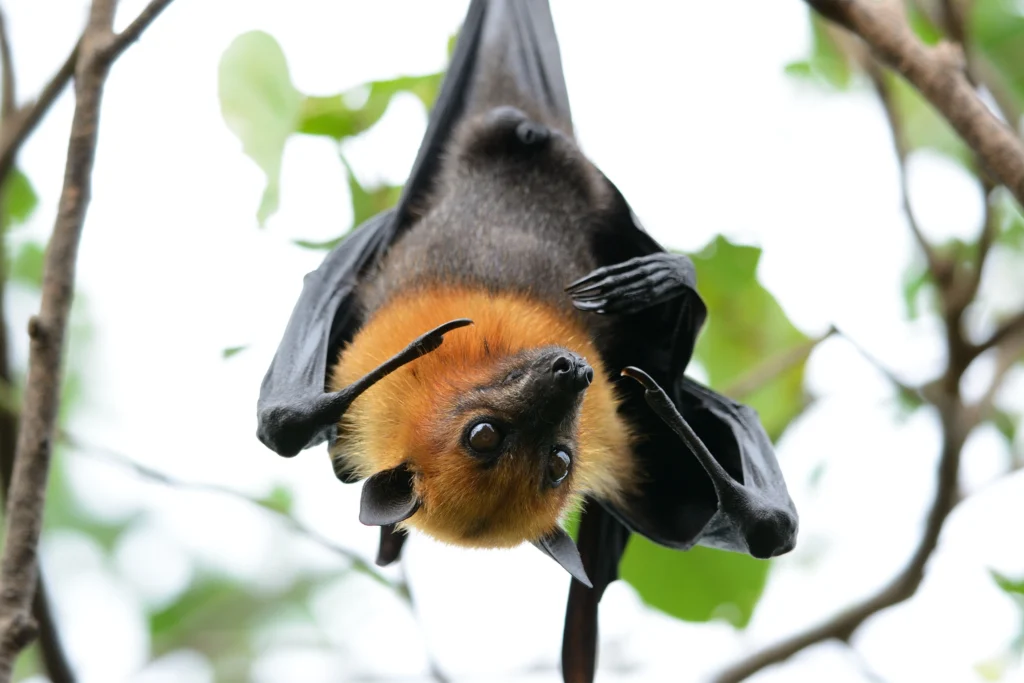Exploring Different Species, Hazards, and Effective Management Strategies



Bats are quite beneficial to the environment especially in regards to pollination, pest control, and seed dispersal. Despite these advantages, having these mammals roosting around your property can at times make them regarded as nuisance. It is during such an occasion, that they become pests, and hence requiring immediate removal.
While at your Colorado home, they can cause noises and disturbances and pose your loved ones to great health risks. In addition, they may lead to some structural damage. Since you definitely do not want to experience these issues, it is best to have them removed.
This article gives insights into their different species, potential risks of having them around, and things you can do to get rid of them.
Understanding Bats
A bat is a mammal that belongs to the order chiroptera. It is famous for being the only flying mammal. It is characterized by its wings, which are adapted for flight. Unlike birds, it has a think membrane of skin that is stretched between the body and elongated finger bones. It also has large and highly sensitive ears that are specially made for detecting sounds, especially echolocation calls. Because of their dietary and habitat flexibility, bats are quite adaptable, a trait that enables them to thrive in a wide range of environmental conditions.
There are over 1,400 species of these mammals. Out of these, several are linked to roosting in houses. While here, they can cause noise disturbances, making it hard for you to go over your normal activities like sleeping. They may also cause significant structural damage, especially when accessing their roosting nests.
Bats Preferences and Seasonal Behavior in Colorado



The state seems to provide amazing conditions for these mammals to thrive because at least 18 species can be found here. They can be found across a wide range of locations including deserts, urban areas, and grasslands. While here, they set up their habitats in places such as rock crevices, trees, and buildings.
The climate of this region really supports their existence. They love moderate temperatures that help them conserve energy and maintain their metabolic rate. This is exactly what this area enjoys all year round, especially in higher elevations. Many areas in the state often experience moderate temperatures during summer, spring, and fall months of the year.
Despite being commonly known for its arid and semi-arid climate, Colorado still has many water
sources. These animals need a lot of water for both drinking and foraging. Lucky for them, the state has a lot of streams, rivers, and reservoirs that support insects, which in turn attract bats to forage.
Their prevalence is also affected by the time of the year. Due to this, you will find that they are not quite commonly seen during colder months. This is because they go into hibernation mode during such times. They do this to lower their metabolic rate and avoid the freezing temperatures outside. This is not the only thing that they do during the colder months because they also migrate as they look for better temperatures and favorable conditions.
In contrast, they are more active during the warmer months. In fact, their reproduction rates are higher during spring and summer months as compared to winter. This is not the only thing that increases during this time, as foraging also goes a notch higher. They will feed more during the warmer days, as there is more prey for them. Due to this, you are more likely to face a bat infestation when the temperatures are favorable.
Common Bat Species in Colorado
Although there are over 1,400 species, only 18 can be found in this state. This part of the article talks about some common ones you can find here.
Big Brown
Just as its name might suggest, this one is quite large compared to others. It weighs 15-26g and its
wingspan can go up to 35cm. It can be recognized from its brown color and black wings. It is very common in the state and loves to set up its habitat in caves, underground mines, and in manmade structures like attics.
Little Brown
Unlike the big brown, this one has a small body but also has a glossy brown fur. It weighs between 5.5 and 12.5g and can grow up to 9.5cm long. Its wings can spread up to 26.9cm. It roosts in sheltered places such as caves, woodpiles, and tree hollows.
Silver-Haired
As its name suggests, it has white-tipped hairs that resemble the color of silver. It is a solitary species and weighs between 8 and 12g. It is quite common in arid habitats in low elevations. It roosts in bark crevices, tree trunks, and tree cavities.
Hoary
It averages between 13 and 14.5cm in length and its wings can spread up to 40cm. It can be recognized from its dense and dark-brown coat. It also has white tips on the hair, a characteristic that makes it get a hoary experience. It can be found in open habitats and forested regions.
Brazilian Free-Tailed
It is medium-sized and is popularly known for its high speed, 99mph, and ability to fly higher than other species, as it can achieve altitudes of about 3,300m. It can be recognized from its dark-brown to gray fur. It roosts mostly in caves but can also be found in manmade features like your home’s ceiling.
As the name suggests, this one is quite common in the western parts of the country, a major reason as to why it is found in the state of Colorado. However, it is one of the smallest and it can grow up to 80mm and has a wingspan of 215mm. It prefers low elevations and roosts in buildings and under rocks.
Signs you are dealing with an Infestation
Now that you have understood the different species that are there, it is now time to have a look at distinct signs you should watch out for to tell you that you are dealing with an infestation. The first obvious thing is seeing them in your property. Seeing just one of them might not be concerning, at first.
However, it could mean that there are others hiding elsewhere. Therefore, if you happen to see a couple of them, you need to be concerned. Another indicator is fecal droppings. These mammals produce many droppings, which can be seen in their roosting areas. You can see these droppings in areas such as roofs, walls, attics, and windowsills. In addition to this, you may hear scratching and rustling sounds on the same areas, especially at night when they are most active.



Potential Hazards of Having Bats at Home
Having these mammals setting up habitats in your house can be quite risky. The first major issue is that they can pose some significant health risks to you and your loved ones. They are known to carry diseases like rabies and histoplasmosis. They also carry bugs, which can cause allergic reactions and skin irritations. In addition to this, they access your house through small openings and gaps on places like the roof or walls. As they do this, they can enlarge these openings leading to extensive structural damage. Finally, knowing that you have uninvited guests in your property leads to lack of peace of mind. This is because their noises will potentially keep you up all night and you will be wondering the best way to get rid of them. In short, having them around leads to reduced quality of life.
DIY Management Strategies
If you are dealing with a small number of these mammals, it makes sense to deal with them by yourself before spending money on professionals. The first thing you can consider doing is using deterrents. You can make use of auditory or visual deterrents do this job. Some options for this to consider include ultrasonic devices, motion-activated lights, or reflective materials. You may also place fans around roosting areas to destabilize the airflow. Due to the nature of bats and their importance in the ecosystem, it is not a good idea to kill them by implementing harsh management methods. It is for this reason that you may have a hard time getting rid of them. This is why it is best to get expert assistance.
Reasons to Hire Experts
As earlier mentioned, dealing with these creatures can be overwhelming. They are quite delicate and it is against the law to kill them. To reduce any issues, it is a good idea to leave this task to the experts. They have the needed knowledge regarding habitats, feeding habits, and general behavior. Therefore, they know how to properly deal with them without neglecting safety concerns. Since bats are protected by wildlife conversation rules and regulations, they will ensure to remove them while following local codes governing their management.






Preventive Measures You Can Take
It is always better to prevent a problem before it happens in the first place. When it comes to dealing with bats, you can do some things to make sure they will never be an issue again. Consider sealing off any entry points that they can use to access your house.
These can be gaps and cracks on the roof, wall, chimney, or eave. Seal all these areas using metal flashing, foam insulation, or caulk. You may also trim vegetation, especially trees close to your house to reduce roosting sites for them. You should also maintain a clean environment at your home because this will help eliminate any potential hiding spots and roosting areas.Although bats play a crucial role in the ecosystem, they can turn out to be pests if the find their way into your property.
While here, they make tons of noises and can even spread diseases to your loved ones. In addition, they can cause structural damage to your property. Since you do not want such issues, it is best to have them removed. At this point, you want to leave this task to the professionals. They have the needed skills and expertise to ensure safe removal of these mammals.
If you think bats are causing you problems in Colorado Springs, CO or anywhere in Teller County or El Paso County, please do not hesitate to
contact us today! We will help resolve your problem quickly, safely, and at affordable rates.
